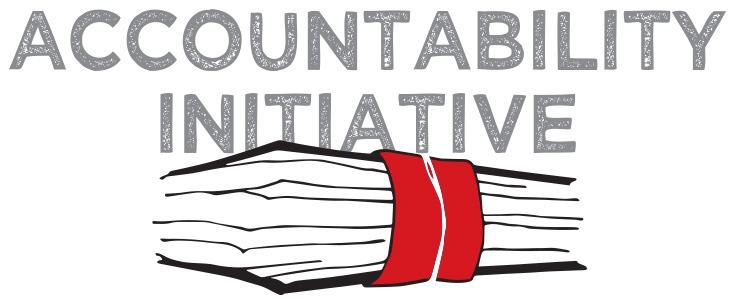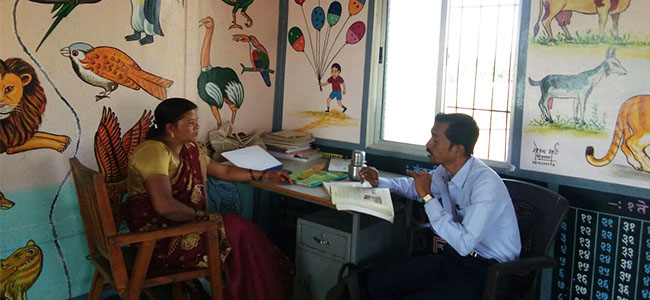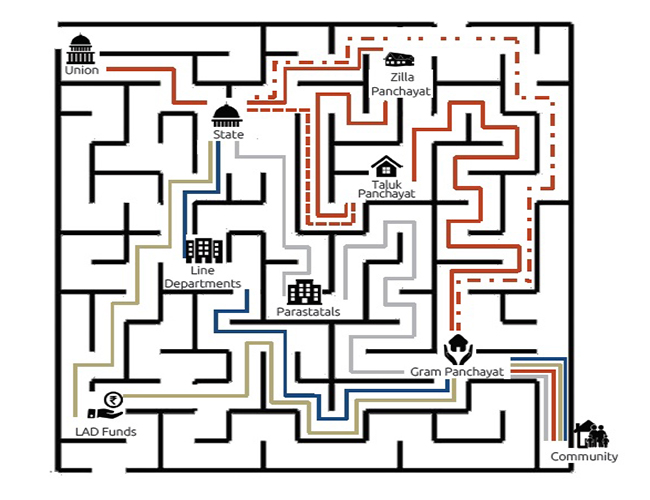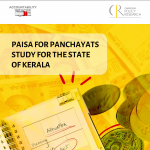
Accountability Initiative 2016: The Year Gone By
7 February 2018
Season’s Greetings! 2016 has been a hectic year for Accountability Initiative (AI), as we continued in our effort to deepen understandings of the everyday workings of the local administration and drew on our research to focus attention on the critical question of how to build state capability to bridge the gap between policy and implementation and deepen accountability for public services in India.
February
AI began the year with the launch of our new and improved website. Our effort through this year has been to use our website as a platform to share our publications, blogs, and opinion pieces. We are also experimenting with new media (audio and visual) to facilitate meaningful public conversations on accountability in India.

March
In March, we released our annual budget publication – the State of Social Sector Expenditure 2015-16. This publication consists of a collection of budget briefs which analyse trends in budget allocations and expenditure for key social sector schemes financed by the Government of India. This year, we reported on the following schemes: Sarva Shiksha Abhiyan (SSA), National Health Mission (NHM), Integrated Child Development Services (ICDS) and Swachh Bharat Mission – Gramin (SBM-G).

Soon after, Yamini Aiyar and Sharanya Bhattacharya published a special article in the Economic & Political Weekly on the local bureaucracy called The Post Office Paradox. Using the case of education delivery, this paper attempts to probe an administrator’s perspective in resolving the implementation problem at the last mile. The study is based on detailed primary fieldwork in Bihar and Andhra Pradesh along with quantitative time-use surveys conducted in Rajasthan, Maharashtra and Himachal Pradesh. It endeavours to trace the cognitive maps of administrators by capturing how last mile public servants see themselves and their jobs and how notions of job performance are internalised and interpreted within the administrative context of elementary education in India.

April
In April, the PAISA for Panchayats report and policy brief was released. The PAISA for Panchayats research project extends AI’s PAISA methodology to track fund flows and implementation processes to the Panchayat level. This report is the first in a series of reports being undertaken through this project. This study analysed trends in fiscal devolution in Karnataka. This state level analysis was complemented with a primary survey of 30 Gram Panchayats in one district to capture the quantum of money spent in a Panchayat in the state.

May
In May, we supplemented our report on the State of Social Sector Expenditure 2015-16 with an in-depth analysis of state finances in 19 states to understand the effects of the 14th Finance Commission recommendations on state finances. Along with an overview report, we published a detailed study for five key states – Rajasthan, Chhattisgarh, Bihar, Maharashtra, Tamil Nadu and Karnataka.

We launched a new study aimed at understanding the on-going effort by the Delhi Government to improve education outcomes in secondary schools. The objective of the study is to track the implementation of the reform process to understand how they are interpreted, absorbed or resisted at various levels. This study will explore three main research questions:
(1) How do the stakeholders in the Delhi school system perceive the objectives of ongoing education reforms?
(2) How do stakeholders (e.g., teachers, mentor teachers, school management committees, and education officials) support or resist the reform and how does this influence its implementation?
(3) To what extent are the ongoing reforms resulting in classrooms that work differently than “business-as-usual” in contexts of low and high capacity?

June
In June, we organised a panel discussion to discuss our reports on the state of social sector spending. These reports were launched against the backdrop of the 14th Finance Commission recommendations and sought to facilitate a dialogue on the emergence of a new narrative of devolution and social sector spending.
July
In July, we partnered with the Central Square Foundation to bring together education practitioners to debate the role of India’s frontline education bureaucracy. The meeting provided a platform to share learnings and discuss ways to engage with bureaucrats on education reform.

August
In August, we released a series of blogs to deepen public discussion on our recent research on fiscal devolution and social sector spending in India. The series focussed on the implications of the 14th Finance Commission’s recommendations on social policy financing in India.

In the same month, we took our PAISA for Panchayats work to Kerala. For this study, we have partnered with the state government and KILA (the government’s institutional arm for building local government capacity). The primary objective of the study is to understand the fiscal health of rural local governments in Kerala. The study will also investigate the efficiency of the current public finance management system and offer recommendations on how to ensure greater transparency and predictability in fund flows to local governments.

September
In September, we organised a week long PAISA course. The PAISA course is AI’s flagship capacity building initiative. The objective of this course is to build a cohort of fiscal detectives at the frontline. Through the course, these detectives are skilled to track fund flows and engage the local administration in a dialogue on deepening accountability for public service delivery. This course is currently designed for AI’s PAISA Associates. The September module focussed on understanding the role of state and Union Finance Commissions in the functioning of the government. It also included modules on accountability and citizen-led participation.

Avani Kapur and Ambrish Dongre from AI published a paper in the Economic & Political Weekly that analyses trends in elementary education financing. This commentary also indicates how the Centre could best incentivise states to spend differently on elementary education.

October
October marked the two year anniversary of the Swachh Bharat Mission. AI contributed to the public discussion by releasing findings from a national survey on the implementation of the Swacch Bharat Mission. The survey was undertaken in December 2015 and covered a sample of 7,500 households across 10 districts in 5 states in the country. The survey findings were also shared with the media through an article written for NDTV.com.

Yamini Aiyar contributed to a podcast produced by the Centre for Policy Research ‘Thoughtspace’ on our research on the frontline bureaucracy in India. Titled ‘Bureaucracy from a Bureaucrats Perspective’, this podcast highlighted key findings from our research and argued for the importance of studying the organisational culture and norms that make up the Indian state. This, it was argued, is crucial to understanding why the Indian state suffers from an implementation problem and under what conditions this can be reversed. This podcast also discussed our future research plans on this topic.

November
In November, we released a five part blog series titled ‘Symbols of Bureaucracy’. Based on the research team’s personal experiences, this blog series was an effort to give readers a sneak peek into the world of India’s frontline bureaucrats. More importantly, it attempted to push readers to rethink and question some of the common myths and narratives associated with government officials in the country.

December
We closed the year with a blog series on the Indian Administrative Services. Written by our advisor Mr. T. R. Raghunandan, himself a retired IAS officer, this series is a humorous, insiders take on key processes such as the performance review in the IAS which shape the organisational culture and morale of the IAS. The series was published on his blog – Raghu Bytes.

Through the year, we have worked to support on ground reform in public education in India by engaging directly with School Management Committees (SMC). This year, the SSA decision makers in Rajasthan incorporated AI’s suggestions in their revised training manual for education managers and heads of schools to work in collaboration with SMCs. For the first time, the PAISA approach to fiscal literacy is included as an intrinsic part as a means to achieving learning outcomes.






